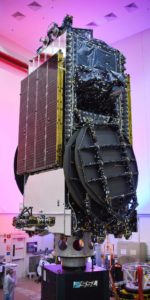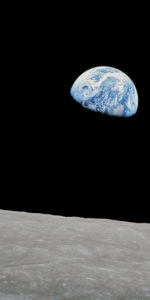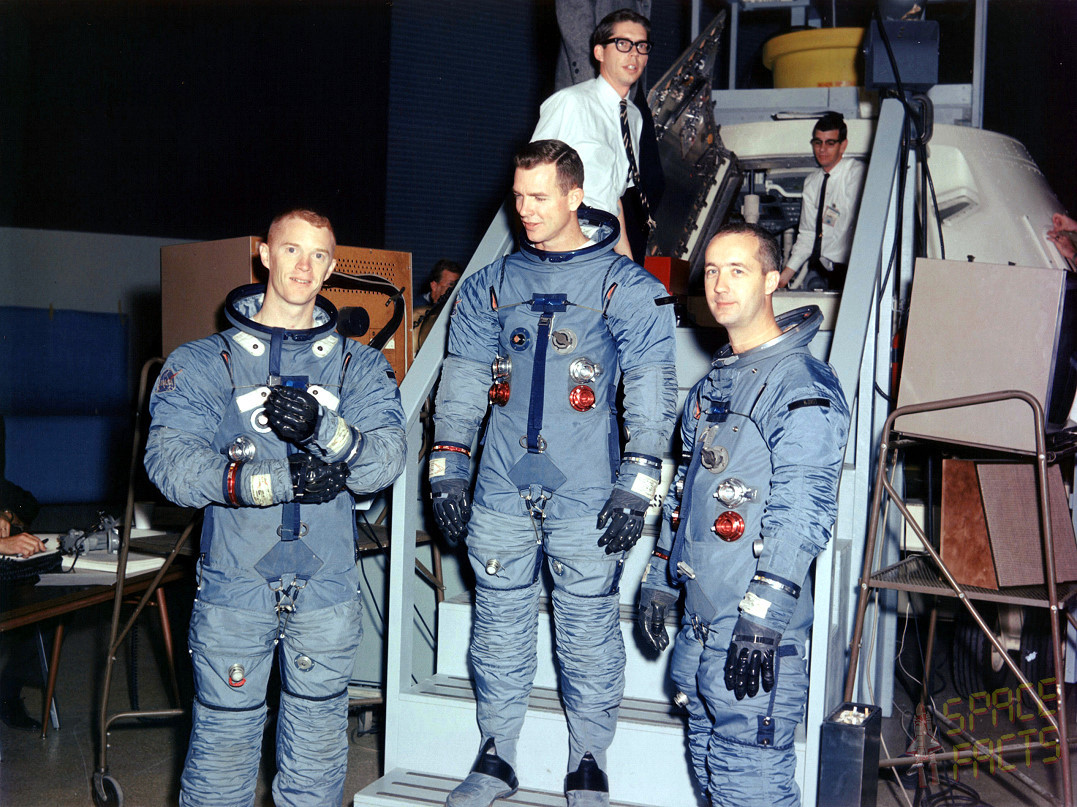
Nearly five decades have passed since astronauts Virgil “Gus” Grissom, Ed White, and Roger Chaffee lost their lives aboard Apollo 1, during a “plugs-out” ground test atop their Saturn IB booster at Cape Kennedy’s Pad 34. In just a few terrible moments on the evening of 27 January 1967, America’s hopes of landing a man on the Moon before the end of the decade were significantly pushed to the right, and it would be almost two years before astronauts journeyed into orbit aboard an Apollo spacecraft. In view of the tragedy which engulfed Apollo, it is remarkable that the United States recovered in such a short period of time to secure the national goal of bootprints on the lunar surface in July 1969.
However, in the weeks before Apollo 1, NASA looked earnestly ahead to 1967, which might have been quite different from a year of tragedy. A few days prior to Christmas 1966—in fact, 50 years ago, this week—12 astronauts were named to support a pair of critical Apollo missions which would have brought the lunar goal closer. As outlined in a previous AmericaSpace history article, a short-lived Apollo 2 flight had already been canceled and the “new” Apollo 2 and 3 would instead evaluate the upgraded Block II Command and Service Module (CSM), together with the first Lunar Module (LM), in low-Earth orbit, as well as traveling to a record apogee of 4,000 miles (6,400 km) above the Home Planet.
Grissom, White, and Chaffee’s Apollo 1—also known by its internal program nomenclature of “Apollo-Saturn (AS)-204”—was targeted for launch in late February 1967, on an “open-ended” engineering test mission of between six orbits and 14 days in duration. Prime and backup crews had been formally announced by NASA in March 1966. The original backups for AS-204, from March to December 1966, were veteran astronauts Jim McDivitt and Dave Scott, together with “rookie” spacefarer Rusty Schweickart. “It’s only as you get right down before flight that it’s pretty clear that the prime crew’s going to fly,” Schweickart told the NASA oral historian, “unless you can break somebody’s leg, late in the game!”
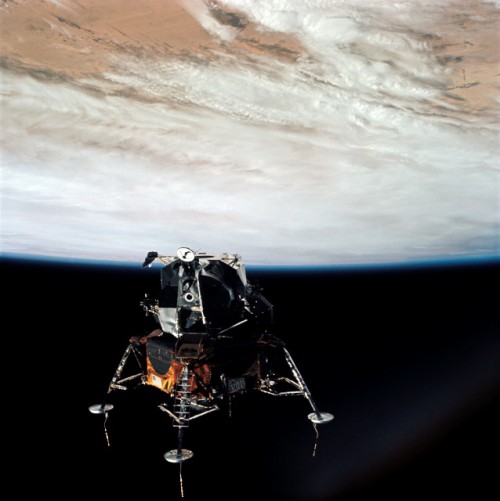
However, in the fall of 1966, the situation shifted markedly. Planning for the first piloted lunar landing followed seven core steps. First came unmanned test-flights of the Apollo CSM and LM, labeled “A” and “B,” after which the “C” mission would execute a manned demonstration of the CSM in low-Earth orbit. This would have been the task of Grissom’s crew in early 1967. Each lettered mission may have required more than one flight to complete. “We would’ve flown ‘C’ five times if we’d had to,” Jim McDivitt related in his NASA oral history, “to get the spacecraft to where we could go on to the next mission.”
Originally, NASA planned a second C-type mission, crewed by veteran astronaut Wally Schirra and rookies Donn Eisele and Walt Cunningham. They would have launched aboard a Saturn IB booster on a flight designated “AS-205.” However, their flight was subsequently deemed unnecessary and canceled in the fall of 1966. Having trained for a similar mission type to Grissom, Schirra’s crew was shifted over to become the “new” AS-204 backup team, effectively leaving them without a mission of their own. It also left Deke Slayton, then-head of NASA’s Flight Crew Operations Directorate (FCOD), with the freedom to assign McDivitt, Scott, and Schweickart directly to a prime crew slot.
“Canceling the second, redundant C mission left Wally, Donn and Walt without a flight,” Slayton wrote in his memoir, Deke, co-authored with Michael Cassutt. “It wasn’t just a matter of giving them the next mission in the schedule, either.” The next mission was the “D” flight, which would have tested the combined CSM and LM combo in low-Earth orbit—a critical engineering, rendezvous, and docking objective for which McDivitt had been training for over a year. “Aside from the fact that Jim was more familiar with the lunar module than anybody else,” continued Slayton, “I had a rule that the command module pilot on flights with a Lunar Module should have flown before, preferably on a rendezvous flight.” McDivitt’s command module pilot, Dave Scott, had prior rendezvous experience; Donn Eisele did not.
Accordingly, on 22 December 1966, McDivitt, Scott and Schweickart were announced as the prime crew for AS-205/208, which it was expected would fly as the “new” Apollo 2 on the D mission. In view of the intensive rendezvous commitment, their backups would be all-veterans Tom Stafford, John Young, and Gene Cernan. It was noted that Apollo 2 was expected to be launched “during 1967,” possibly in the August timeframe, but would “depend on the success of other Apollo missions, including AS-204.” McDivitt’s crew would launch aboard their Block II CSM, via a Saturn IB booster, after which the LM would launch atop a second Saturn IB, about 24 hours later.
The AS-205/208 dual nomenclature is interesting. At first, Schirra, Eisele, and Cunningham would have ridden the AS-205 Saturn IB vehicle, but after their Apollo 2 flight was canceled, the situation changed. McDivitt’s crew—originally earmarked to fly their CSM to orbit atop the AS-207 Saturn IB for the D mission—were reassigned to launch into low-Earth orbit atop the AS-205 booster. A second Saturn IB, launched 24 hours later, and designated “AS-208,” would transport the unmanned Lunar Module (LM)-2 into low-Earth orbit. The crew would rendezvous, dock and extract LM-2 from the S-IVB second stage of the Saturn IB. McDivitt and Schweickart would then transfer from the CSM to the LM and undock to perform a series of tests of the lunar lander’s descent and ascent engines. Finally, they would redock with Scott in the CSM, jettison the lander, and return to Earth after a mission lasting approximately five days. “The LM was especially tricky,” wrote astronaut Mike Collins in his autobiography, Carrying the Fire, “because once McDivitt and Schweickart got in it and separated from Scott in the command module, they had to get back, having no heat shield on their frail craft, and therefore being unable to return to Earth separately without burning up.”
However, the crew was unhappy with many aspects of LM-2. As described by Courtney Brooks, James Grimwood, and Loyd Swenson in Chariots of Apollo, Grumman Corp.—prime contractor of the lunar module—had faced significant cost overruns, in addition to problems with both the descent and ascent engines: propellant instability, excessive erosion of the combustion chamber throat, and fabrication and welding difficulties. By the end of 1966, LM-1 and LM-2 were on the test stand, with the LM-3 through LM-7 vehicles in various phases of construction and checkout. Plans to deliver LM-1 to Cape Kennedy in the spring of 1967 proved fruitless, as the program fell further behind schedule.
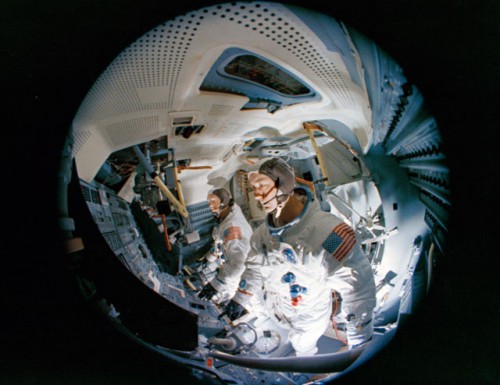
Its successor, LM-2, which was slated to fly on McDivitt’s D mission, had troubles of its own: systems glitches, broken wiring, and associated integration issues. At length, it was decided to utilize the next lunar module, LM-3—whose fabrication and checkout was progressing with greater smoothness—for the AS-205/208 mission. “We made that tough decision of essentially making LM-2 a hangar queen, or a museum-piece, and shifting to LM-3, which was in much better shape,” Schweickart told the NASA oral historian. “Lunar Module-2, coming down the line, was just bailing wire and Band-Aids. It was really a pin-cushion. We just realized that we’d just never get off the ground if we kept trying to put Band-Aids on that.”
On the evening of 26 January 1967, the night before Grissom, White, and Chaffee lost their lives aboard the AS-204 spacecraft, it remained possible that three piloted Apollo missions would fly during the course of the year. With AS-204 newly renamed “Apollo 1,” at the behest and lobbying of its crew, and AS-205/208 targeted for August, all three core components of the spacecraft—Command, Service, and Lunar Modules—would have been trialed in low-Earth orbit. In parallel development, the mighty Saturn V booster for the lunar voyages would be test-flown in an unpiloted capacity, before it could be entrusted to carry a human crew.
Tomorrow’s concluding part of this article will explore what should have been the Saturn V’s first launch with people aboard. Interestingly, its target would not have been the Moon, but instead a highly elliptical Earth orbit, which would carry its crew—Frank Borman, Mike Collins, and Bill Anders—further from their Home Planet than any human before them, to an apogee of more than 4,000 miles (6,400 km). And we will look back at how the plans for early Apollo missions changed and morphed, as one of the 20th century’s most audacious plans took shape: the plan to finally bring American bootprints onto lunar soil before the end of the 1960s.
The second part of this article will appear tomorrow.
Be sure to “Like” AmericaSpace on Facebook and follow us on Twitter: @AmericaSpace




